Enter the vibrant and buzzing neighbourhood of Konkan Nagar, home to migrants from the state’s coastline since 1960, and current muse for a city-based artist’s latest exhibition
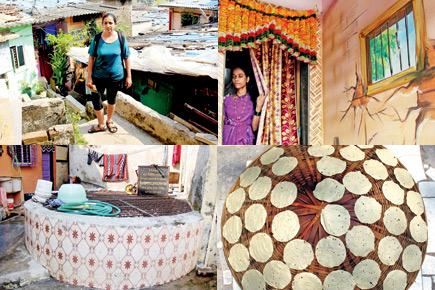
Konkan nagar
![]() The distinct smell of freshly painted pandals for Durga Puja and strains of Marathi Folk music greet us as we step into a bustling bylane of Konkan Nagar in Bhandup (W) to meet Prajakta Palav. As one of the artists associated with Mohile Parikh Centre’s year-long public art project, Geographies of Consumption, the 35-year old Sir JJ School of Art graduate has been exploring this neighbourhood for two years.
The distinct smell of freshly painted pandals for Durga Puja and strains of Marathi Folk music greet us as we step into a bustling bylane of Konkan Nagar in Bhandup (W) to meet Prajakta Palav. As one of the artists associated with Mohile Parikh Centre’s year-long public art project, Geographies of Consumption, the 35-year old Sir JJ School of Art graduate has been exploring this neighbourhood for two years.
ADVERTISEMENT
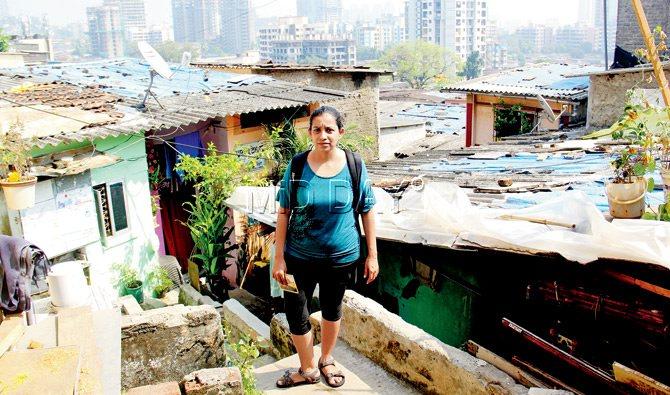
Artist Prajakta Palav in Konkan Nagar, which is dotted with steps that work as pathways since it is built on a hill. Pics/Sharad Vegda
“I first visited Konkan Nagar some years ago to meet a lady who would baby-sit my daughter. I fell in love with the site; my daughter calls it a fairyland,” says Palav, as she readies to host an exhibition of six paintings to reflect the corners of this neighbourhood as well as conduct treks and workshops here. Keen to experience this micro-universe, we joined Palav for an hour-long trek.
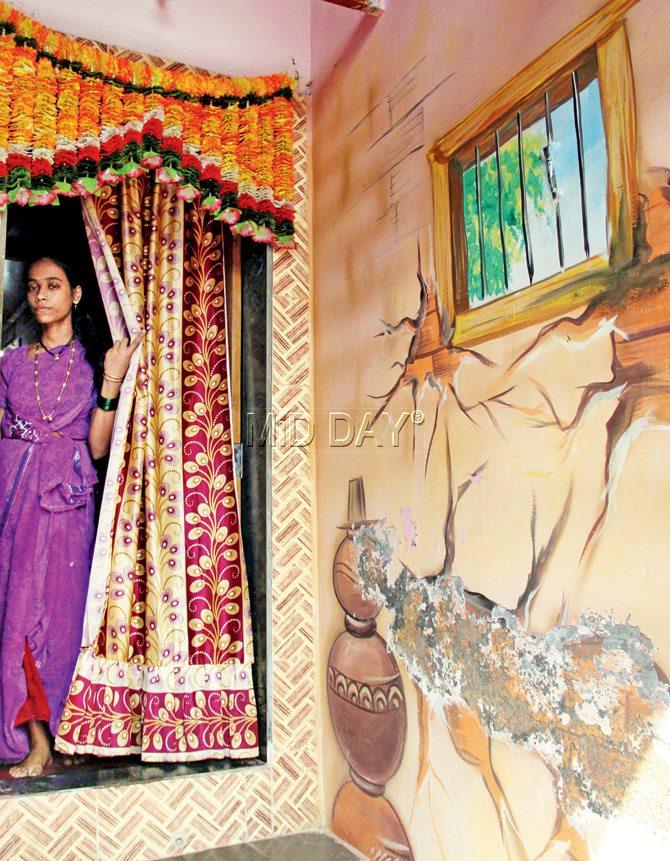
A wall painting of pot pyramid, typically found in homes in the Konkan, outside a home in Konkan Nagar, Bhandup. Pic/Sharad Vegda
Survive and sustain
In the 1960s, people from the Konkan migrated to Mumbai to work in the now-defunct textile mills and made the hills of Bhandup their home. “It’s how this place got its name. I believe there would have been temporary cloth and plastic hutments earlier but with time, this site developed permanent houses. However, the settlers don’t have any property papers. So, it is difficult to map the area or even count the number of residents as this neighbourhood continues to grow. Each time you visit, you will spot a new development,” she informs. Coincidentally, Palav’s hometown is Malvan (a part of Konkan) and hence she found an instant connect with this site.
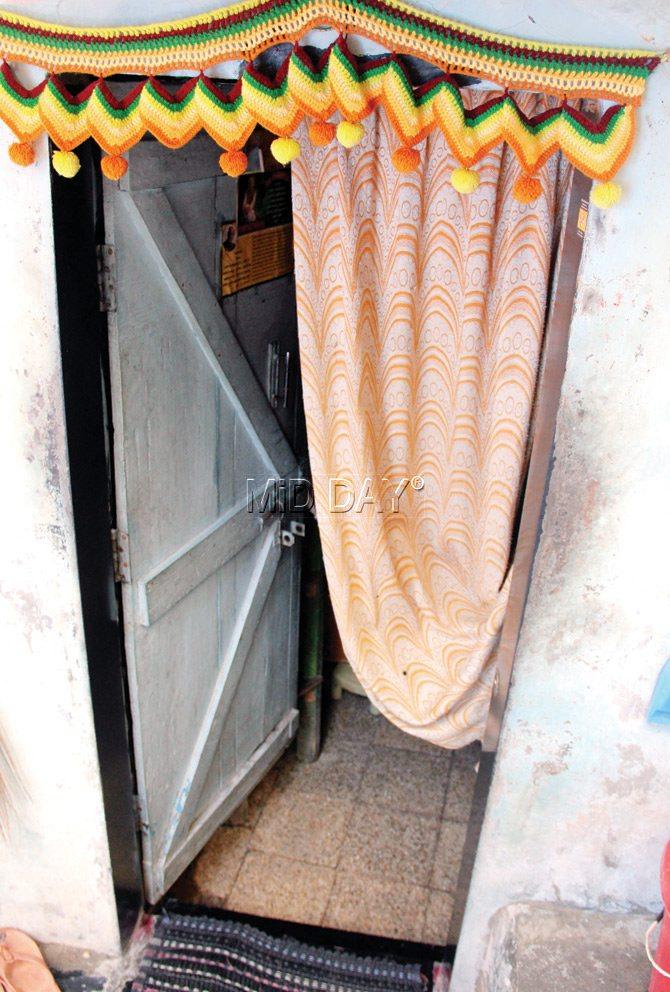
Handmade crochet buntings (torans) adorn most doorsteps here. “Knitting them is calming since it requires concentration. You have to knit in X-and-0 patterns,” shares Palav
With many entry and exit points, the settlement feels like a maze of snaking pathways bordered by rows of single-storey homes and high stone steps at every few feet, reminding us of Konkan Nagar’s hilly, uneven topography.
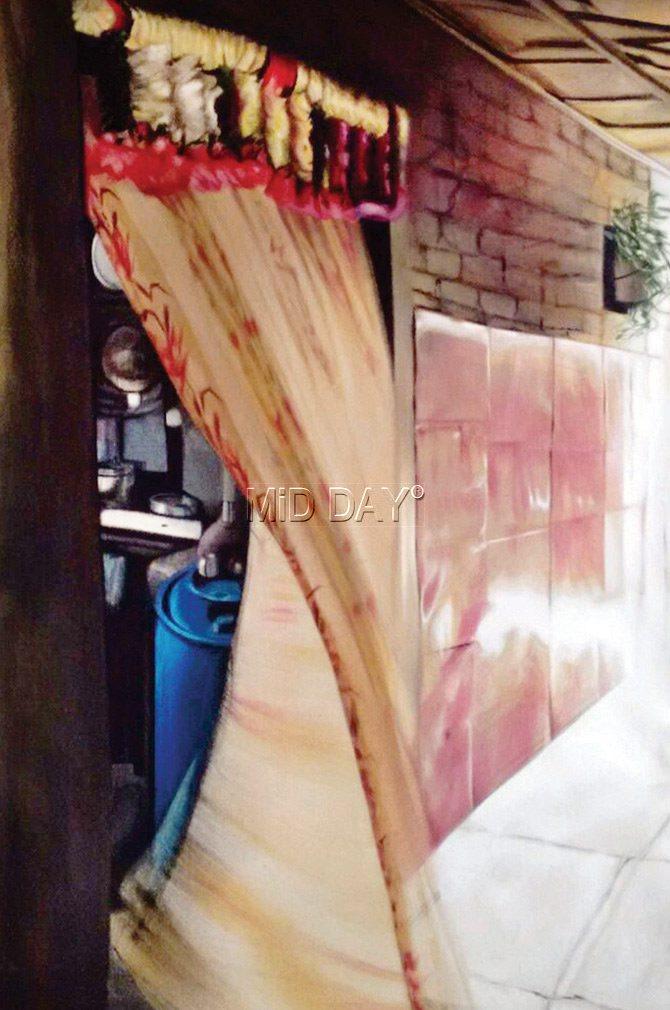
One of the six paintings by Palav that will be displayed at the exhibition
With Powai Lake nearby, the area is dotted with many wells (the first was built in 1972, informs Palav) that were dug by locals for their daily needs. “Residents have found ways of sustainability. They have created an underground drainage system where every resident is allotted a day to remove stone slabs and clean the drains,” observes Palav.
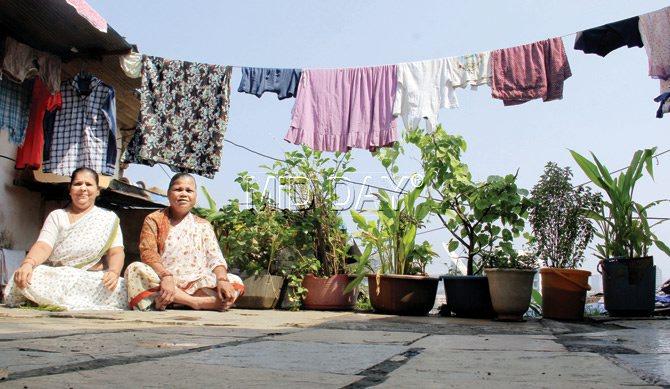
On this terrace, residents grow potted curry leaves, turmeric and hibiscus (used in Ganpati puja), all sourced from their hometown
It’s 11 am, the sun plays hide and seek between tiny lanes as cats and dogs amble along. Women wash clothes using water from common taps fitted at regular intervals. When we look closer, we realise that this daily chore also cleans the pathways, another method to sustain this society.
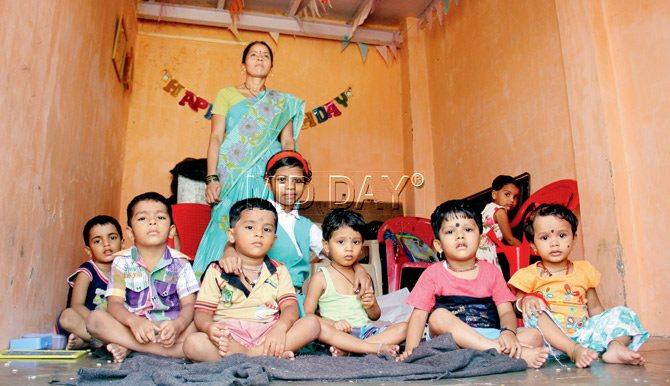
A resident conducts an Aanganwadi class in the neighbourhood every day
We spot a solar panel on a streetlight and have to move to the side, as we make way for a few impatient school kids. “There are six schools in this area, of which one hosts its annual race in this settlement; kids have loads of fun running from the top to the bottom of the hill,” shares Palav.
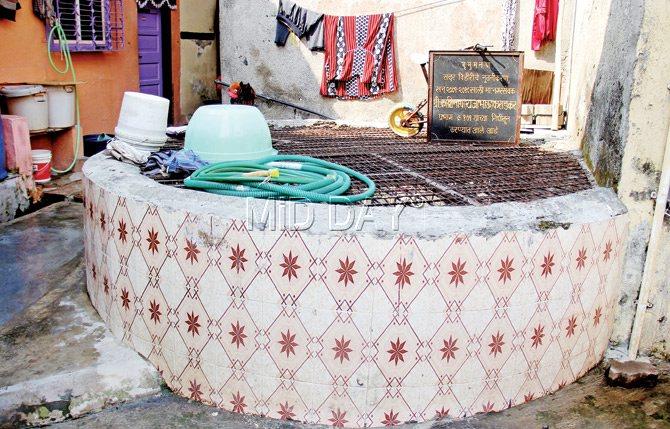
One of the first wells dug in 1972 in Konkan Nagar
While most men work as security staff in factories or at Andheri’s SEEPZ, women are mainly homemakers. The neighbourhood also includes a tiny home-run store selling milk and other products of daily use. There is also a tutor for primary school subjects, a tailor and an Aanganwadi. “They are self-sufficient. The biggest problems are the lack of a market or a hospital in the area,” rues Palav.
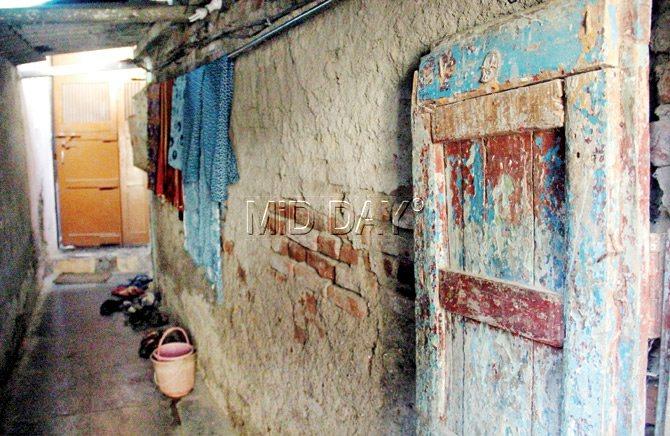
An old wooden door with peeled-off paint that opens into two houses in the settlement
Konkani connect
By now, we’ve reached Sahyadri Nagar and Jamil Nagar, the extensions of Konkan Nagar. Punctuated with chatter from the Maharashtrian womenfolk catching up on gossip, there’s a strong whiff of dry fish and fried green chillies that greets us from billowing curtains instead of closed doors. “They cook traditional Konkani fare. Many residents head to their native place during Ganpati and return with plants to grow here,” informs Palav. While Ganeshotsav is celebrated with gusto, so is Navrati and Christmas. “I’ve seen Santa Claus figurines made from cloth outside houses during that time. The neighbourhood is secular. People from Bihar and a few Christians have settled here too,” says Palav.
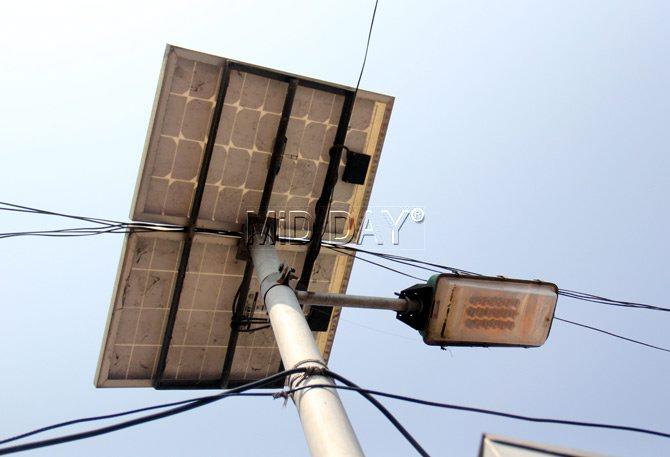
A solar panel on the streetlight
Curious glances greet us en route but Palav’s presence warms them up. “They have seen me around a lot. I first started making malas (garlands) with scrap plastic and cotton threads as an art project; many women would join me. It’s how I earned their trust,” she shares. We wind our way to a terrace built on a water tank that offers vantage view of the settlement; it will be the exhibition site. The nearby Sai Baba temple will exhibit selected works of Palav’s students from Rachana Sansad where she is a lecturer. “Which neighbourhood would have allowed me to display works in a temple!” remarks Palav.

Prajakta Palav in one of the winding bylanes of Konkan Nagar
As we sit under the shade of a tree on the terrace, watching two kittens have a go at each other, surrounded by ‘nightie’-clad women dishing out cooking tips, we ask Palav if locals have discussed redevelopment.
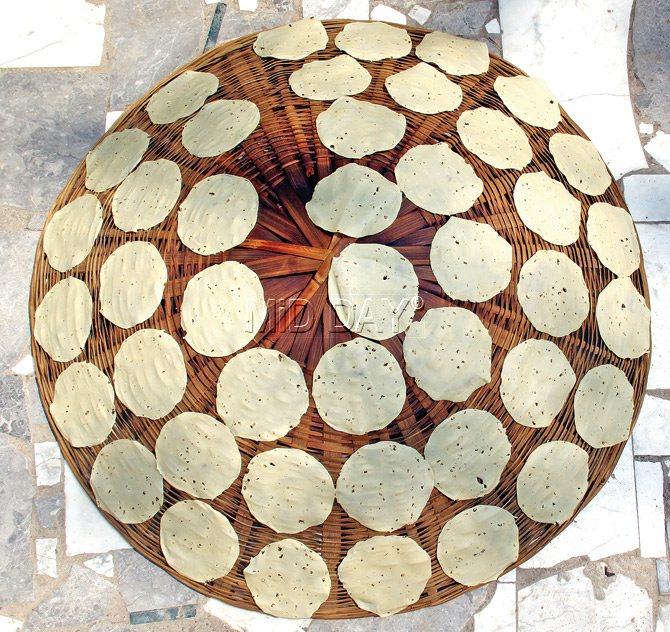
Rice papads left out to dry in the sun
Instead of commenting, she shows us photographs from one of her art projects that feature notes penned by local kids where they mention that they aren’t deprived and love this home. If Konkan Nagar falls to land sharks, eventually, it will mean a loss of a ‘fairyland’.
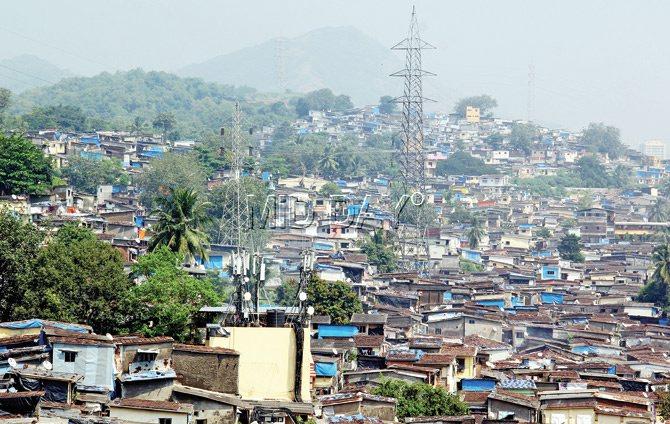
A top view of Konkan Nagar bordered by skyscrapers in Bhandup (W)
Till: October 18 (exhibition, treks and workshops with students, 11 am to 1 pm); trek for participants (October 17 and 18, 3 pm)
Starting Point: Konkan Nagar Vyayamshala, Bhandup (W). RSVP nikhil@mohileparikhcenter.org
Call: 9224487641/9820806187
Note: No parking facility in the area; please use local transport.
 Subscribe today by clicking the link and stay updated with the latest news!" Click here!
Subscribe today by clicking the link and stay updated with the latest news!" Click here!






